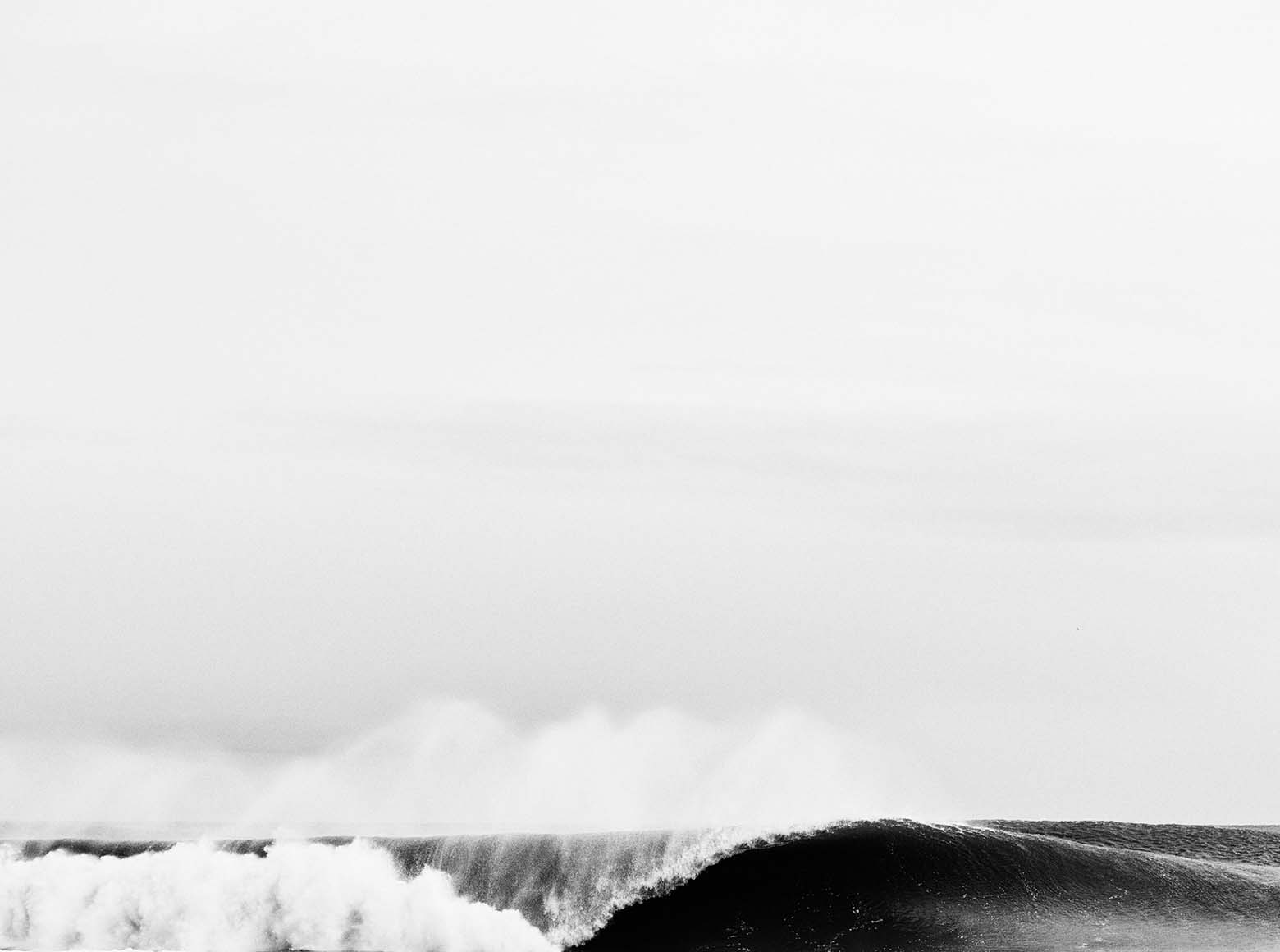December 14th, 2021

Courtesy TIM WILLIAMS FINE ART
The accusation comes on Thursday, directly after lunch hour; there are bits of nigiri still waiting to be cleared from the table when the guests hear it, the afternoon sun coming through the curtains to light up fatty cuts of underbelly.
At the core of the accusation is a question, but it’s delivered more like an urgent announcement. “Alright everyone! Where the hell is the Williams painting?”
The work in question, a hyper-realist rendition of an ocean wave crashing neatly onto itself, has supposedly vanished.
In a flushed concern, the guests rush out of their seats to see the empty wall left in the painting’s absence for themselves. First to get up is Sasha, the famous art journalist and a huge Williams fan.
Sasha and seven others were invited to this extravagant home in Sagaponack on the promise of a week of creative exploration “at the intersection of art and technology.” The summer of 2029 was nearing its end, and assembled here were the greatest minds of all major industries to collectively “reckon with the new-age ‘30s,” as the host put it.
Even Sasha could admit that the house was the perfect place for this elitist incubator inaugural. It was a one-time home to Willem De Kooning, and a permanent one to Jackson Pollack and Lee Krasner, both buried in the nearby Green River cemetery. Sasha was the lone writer in the group, among an Ecuadorian cryptocurrency magnate, a choreographer famous for her work with incorporating drones, and a poet who was much better known for her anarchist projection art.
The accuser was none of these, however. It was Horner Brentman, the host, founder of the residency and famed inventor and entrepreneur. His company, Atuma, had developed a carbon- based printer so advanced it ushered in a new age of commerce and even language, relegating the term “3D printing” to the past. He referred to his process lovingly in interviews as “molecular manifestation” and held six patents related to hydrogen collision. With Brentman’s technology, people could—and did by the thousands—order anything online, only for it to immediately appear, “molecularly manifested,” in their home in seconds. In addition to convenience, this eliminated the need for packaging and shipping, making Horner an ally to both environmental groups and investors.
He presents the facts bluntly: An original, priceless painting is missing. Pacing back and forth but edging ever closer to the dining table, Brentman begins to berate the guests. “I know one of you stole it, obviously.”
Damian, the cryptocurrency CEO, adjusts his grip on the chair’s curved back. “As if any of us would think you wouldn’t notice it going missing?” he defensively retaliates. “None of us have even left today.”
“This is truly a humiliating accusation to make,” the choreographer chimes in, before Horner can react.

Courtesy TIM WILLIAMS FINE ART
“No one leaves this room until we figure out where the painting has gone. For all I know, someone has taken it, scanned its AFIG for reproduction and is planning on selling a counterfeit.” They all know that AFIG is shorthand for atomic configuration, the genetic code of any object created with Brentman’s device.
“Wouldn’t an appraiser be able to distinguish the authenticity of the original? Through carbon?” asks Sasha.
Horner stares at each of his residents, evidently frustrated, but his hands are kept coolly at his sides as his eyes make their way across the dining table. The guests exchange stares of shared indignation, waiting for the exchange to be over so they can get back to the new passions they have discovered over the course of the week: floating in zero gravity tanks, listening to eight-dimensional music, and smoking herbal cigarettes by the pool.
Sasha is about to demand that they all deserve an apology when Horner exits the room. The residents hesitate, unsure of how to proceed in the presence of this new hostility that lingers despite the host’s absence. The poet drags her chopsticks through a shallow puddle of liquid aminos on one of the remaining plates.
The choreographer is the first to break the silence. “Well, I don’t know about you all, but I could use an hour in one of those zero-gravity float tanks,” she posits, heading for the hallway.
Before anyone has a chance to follow her, a shriek is heard from the other room. The group rushes out to find the choreographer standing still, wide-eyed with a gaping jaw. Sasha inhales sharply, some of the residents gasp, Damian begins to curse. The scene before them is neither gruesome nor sinister, although perhaps to an elite crowd such as this, it is both. Not only has the missing Williams painting returned to the wall where it once was, but hundreds of identical paintings now surround it, each one completely indistinguishable from the other.
Horner stands next to them, arms crossed. “What’s going on?” insists the choreographer, but he doesn’t reply. A smirk is beginning to appear across his face. “Which one is the original?” Sasha demands.
“The only fool is he who believes more art in the world is a bad thing.”

Courtesy TIM WILLIAMS FINE ART
“There’s no way to know.” Horner says facetiously. “My machine doesn’t just replicate objects anew, it processes the original timestamp. These replications have the same tiny scratches and bits of fading as the real painting.”
“But why? With every replica the value of the art diminishes. Doing something like this could make the most priceless pieces...worthless,” stammers the poet.
“That is precisely the point, which begs the question: what is the purpose of art? Is it meant to be purchased by only the elite? To be on display at only the finest museums? Or to be experienced by anyone who wishes to see it? Is art made to be enjoyed by the few or by all?”
“So this was all a stunt? To make a fool of all of us?” exclaims Damian. Red color starts rising in his cheeks. “The only fool is he who believes more art in the world is a bad thing,” replies Horner. As if nothing happened, Horner carries on down the hallway past the row of paintings. “It’s a lovely day for a dip in the pool. I hope you’ll all join me, if you care to,” he says, and promptly exits.
As he walks toward the parlor, he hears in the distance the argument growing between the great minds he has assembled. He hears the phrase “pure genius”; he hears the phrase “uncontrollable evil”. He smiles to himself and steps out the back door onto the lush, summer grass.





